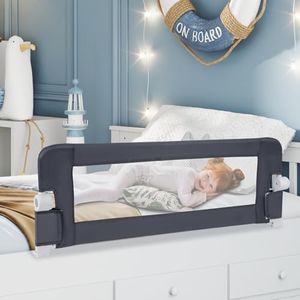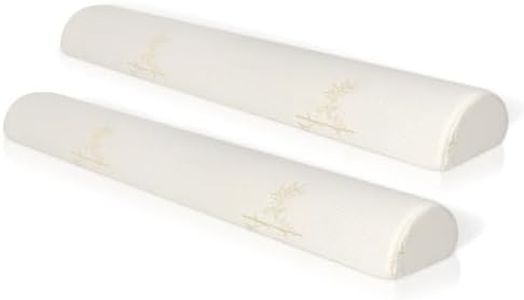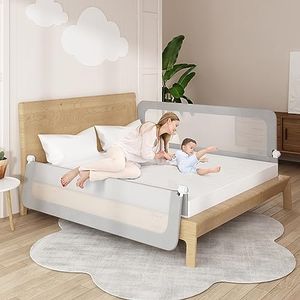We Use CookiesWe use cookies to enhance the security, performance,
functionality and for analytical and promotional activities. By continuing to browse this site you
are agreeing to our privacy policy
10 Best Toddlers Bed Rails
From leading brands and best sellers available on the web.By clicking on a link to a third party's website, log data is shared with that third party.
Buying Guide for the Best Toddlers Bed Rails
Choosing the right bed rail for your toddler is all about ensuring their safety and comfort as they transition from a crib to a regular bed. Bed rails keep active little sleepers from accidentally rolling off the bed while giving parents peace of mind. Before buying, it's useful to think about how your child sleeps, the size and style of their bed, and your own priorities regarding ease of use and travel.Rail HeightRail height refers to how tall the side barrier stands above the mattress. This is important because the rail needs to be high enough to keep your toddler safely in bed but not so high that it's difficult for you to lift them in and out or for the child to climb over safely when needed. Lower rails often suit older toddlers who are almost ready to sleep without protection, while higher rails offer more security for restless or younger sleepers who move around a lot during the night. Consider your child's age, activity level during sleep, and your preference for keeping the bed accessible.
Length of RailLength describes how much of the bed’s side is covered by the rail. Some rails run nearly the entire length of the bed, offering maximum protection, while others cover just part of the side, allowing easier access for getting in and out. Longer rails may be best for children who tend to move around a lot, while shorter rails suit children who need just a little reminder at the edge. It's useful to consider your toddler's sleeping habits and if you want a rail that folds down or leaves access at the foot or head of the bed.
Type of InstallationBed rails can be installed in various ways: some slide under the mattress and are held in place by the child's weight, others use straps or anchors to secure them, and some need to be screwed into the bed frame. Slide-under rails are easier to install and move, making them a good pick for travel or temporary setups. Anchored or screwed-in types offer more security but require more effort and are better if you want something more permanent. Your choice should reflect how long you plan to use the rail, the type of bed, and whether you'll need to move it often.
Material & PaddingBed rails come in different materials like metal, plastic, or wood, often with added mesh or soft padding. The material affects weight, durability, and how gentle the rail is if your child rolls against it while sleeping. Mesh panels increase airflow and visibility, making them a good choice for warmer climates or for keeping an eye on your child. Padded and mesh rails are softer and more forgiving, ideal for active sleepers, while hard rails can be more durable but may feel less comfortable. Consider your child's tendency to bump against the rail, and your preference for ease of cleaning and softness.
Portability & FoldabilitySome bed rails are designed to fold down or be removed easily for travel or making the bed. Foldable rails are very convenient if you need to quickly access the bed for changing sheets or want to take the rail with you when traveling or staying overnight at relatives. If portability is high on your list, look for rails that are lightweight, compact, and quick to install and remove. For a permanent solution, this may be less relevant, but for families on the go, it's a key feature.
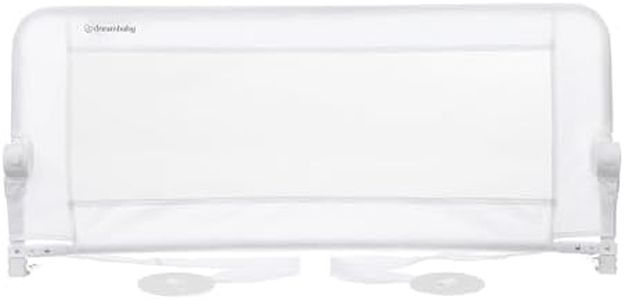

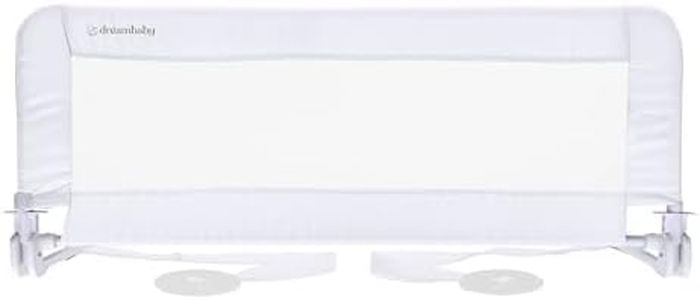
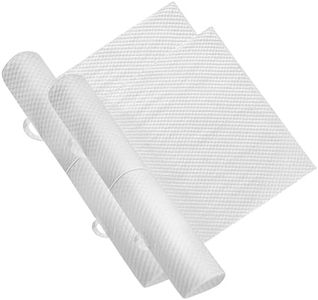
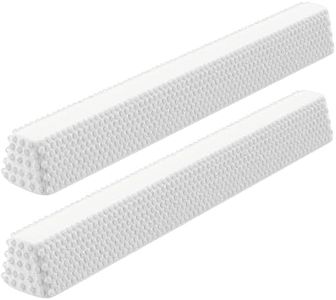
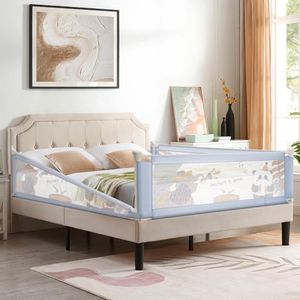

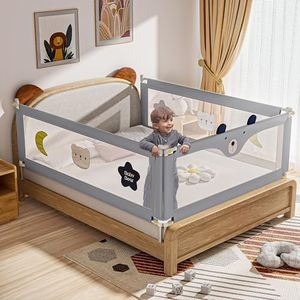
![[2-Pack] hiccapop Foam Bed Bumpers Toddler Bed Rails with Water-resistant Cover for Kids - Safety Side Pillow Pads](https://images-proxy.bestreviews.guide/duyJx_WYPf8hscJyScLn3eKupIA=/0x300/https://m.media-amazon.com/images/I/51yXOvsaoxL._AC_CX679_.jpg)
